Contact
Insight:
A design that showcases the potential of disused infrastructure in providing community open space with an integrated stormwater design
Project description
Greening the Pipeline is the transformation of a heritage listed Main Outfall Sewer reserve into a 27km linear park in Melbourne’s west. The project is delivered through organisational partnerships (Melbourne Water, Wyndham City Council, City West Water, VicRoads), community engagement, and supported by the Greening the West initiative.
The Williams Landing Pilot Park is the first project of Greening the Pipeline, which has transformed a section of the heritage-listed Main Outfall Sewer (MOS) reserve into a local parkland which demonstrates how the transformation can connect the community, provide additional recreational opportunities, provide urban cooling and treat and use urban stormwater for irrigation.
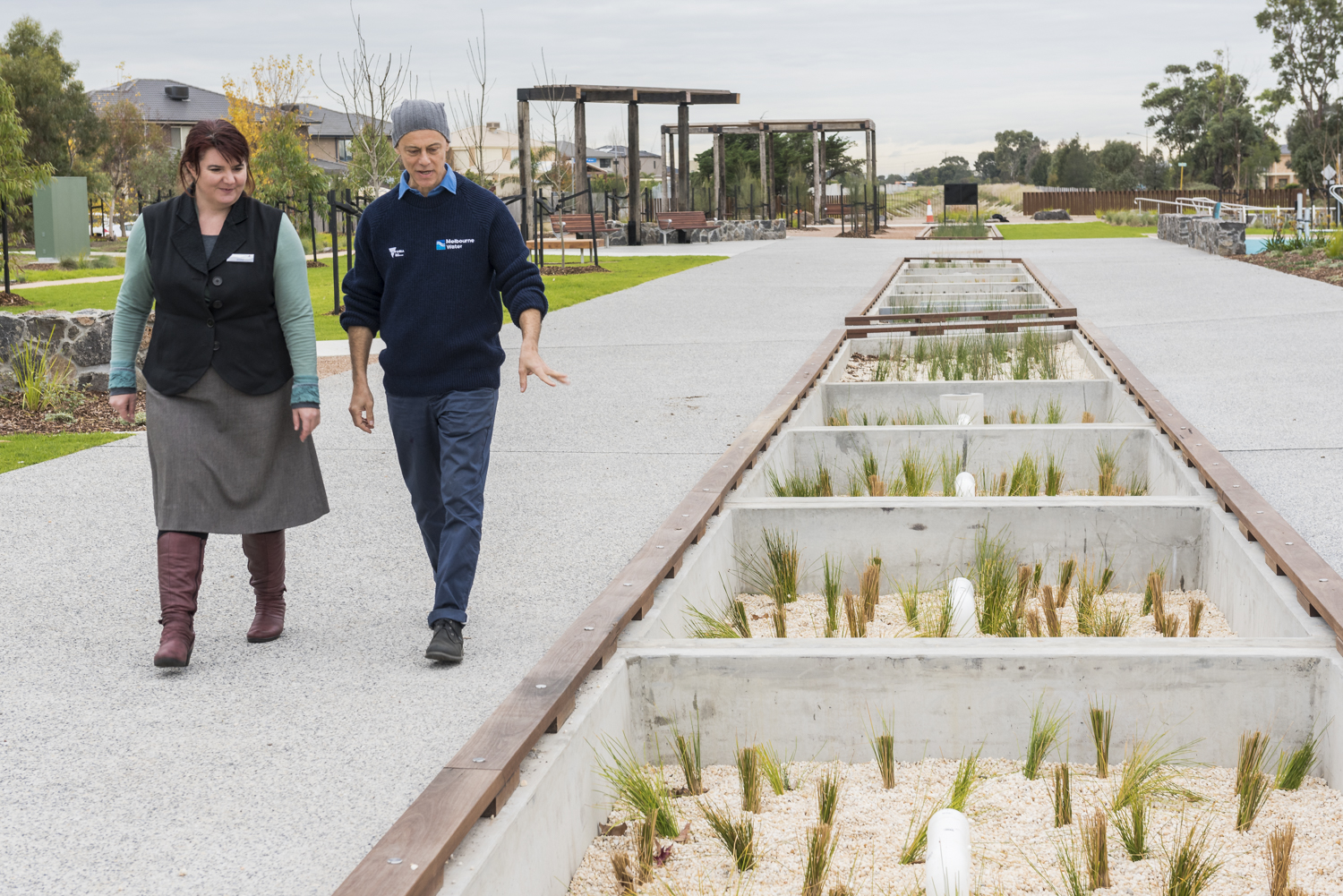
The drivers
Showcase the potential of the Federation Trail and Main Outfall Sewer reserve to serve as a green linear parkland
- Lack of open space in area: The local area in Wyndham has a lack of public open space. By creating green space in the corridor, the water industry was able to create a much needed community asset.
- Heritage infrastructure corridor transformed into functional space: Taking inspiration from projects such as New York’s High Line, Greening the Pipeline’s vision is to create a vibrant space that will connect communities, enhance active transport options for the region, manage water sensitively and provide a unique space to meet, play and relax.
- Use of pilot project to gain momentum: The Williams Landing Pilot Park aims to showcase the potential of the Main Outfall Sewer (MOS) reserve as a green linear parkland that takes a more holistic approach to water management, enhances community liveability, and connects the community to the heritage and history of the MOS.
The innovations
Integration of stormwater treatment cells into parklands for irrigational reuse for the surrounding vegetation
- Local stormwater harvesting system within parkland: Local stormwater flows from Wyndham Waters residential estate are diverted and captured by modifying an existing junction pit. The stormwater is then transferred to ‘primary storage’, using two 11m lengths of slotted 525mm pipe located within the Main Outfall Sewer.
- Raingardens: Raingardens are used for the treatment of locally harvested stormwater flows.
- Reuse storage zone: 51m length of slotted 525mm pipe is located within the MOS invert to provide approximate 28m2 of storage, before pumping the treated stormwater to the irrigation system.
- Stormwater irrigation scheme: Treated stormwater is pumped from the storage zone into the irrigation system, watering trees, plants and the new parkland.
- Sharing knowledge at the Pilot Park: Education is important for the project in connecting the community and industry with the history of the MOS and the benefits of integrated stormwater systems for the environment. Following the completion of the Pilot Park, numerous site visits have been held to share learnings with the industry and the community. This includes with the Bangkok Municipal association and Tianjun Government Leaders program through the UN Global Compact Cities program, the Ecocity Global Summit, China’s Ministry of Housing and Urban Renewal Development, Clearwater, Truganina South Primary School students.
The lessons
- Early investment in a pilot project can help to justify further investment: A good measure of public/stakeholder interest and feedback may be attained by constructing a pilot park over a fraction of the entire length of the site.
- Transforming old into new: It is possible to transform a 19th century decommissioned sewer asset into a 21st century water sensitive community space.
- Add time to a project which isn't business as usual: An important lesson was how much time it takes to work through organisational barriers when implementing a different type of project that hasn’t been done before. Allowing time for collaboration and supporting champions of change is crucial here.
Transferability
There may not be many locations which consist of heritage listed water infrastructure which is located in unused linear easements and provide an opportunity for a continuous linear open space. However, this project demonstrates that underutilised green easement corridors and decommissioned open drains across our urban areas can be transformed into the valued community assets. This project also demonstrates the value of early pilot projects to gain momentum and community involvement and support of further investments.
Project stats
Location
Melbourne, VIC, Australia
Participants
Awards
Victoria Water Association 2017 - Finalist
Topics
Additional information
Contact
The outcomes
 Cities providing ecosystem services
Cities providing ecosystem services

- Reduced pollutant loads to receiving waterways: Raingardens are used to treat stormwater from the local catchment and reduce the pollutant loads entering downstream waterways.
- Reduced urban runoff: Capture and reuse of stormwater will reduce the volume of runoff from the local area, which will provide cumulative benefits to waterways under stress from increased volume and frequency of flows.
- Reduced urban heat island effect: Greening of a concrete structure provides positive microclimate benefits.
 Cities as water supply catchments
Cities as water supply catchments

- Stormwater as an alternative water source at a local scale: Stormwater low flows are diverted from an existing stormwater pipeline to be stored, treated and reused for irrigation of the new parkland.
 Cities comprising water sensitive communities
Cities comprising water sensitive communities

- Engaged decision-making: A number of community and stakeholder engagement activities were held over two months to inform the design of the Pilot Park for Williams Landing. The public website also provides up-to-date information to keep the community informed and aware of upcoming opportunities to get involved.
- Sharing knowledge: Numerous site visits at the Pilot Park have been held to share learnings with the international industry, local industry and the community.
- Educated citizens: The Greening the Pipeline website provides a wealth of information regarding the project and its benefits, including managing water sensitively.
Business Case
|
Costs
|
Benefits Economic benefits
Environmental benefits
Social benefits
Health benefits
|
Interested in this solution?
We partner with small and large companies, government and industry in Australia and around the world.

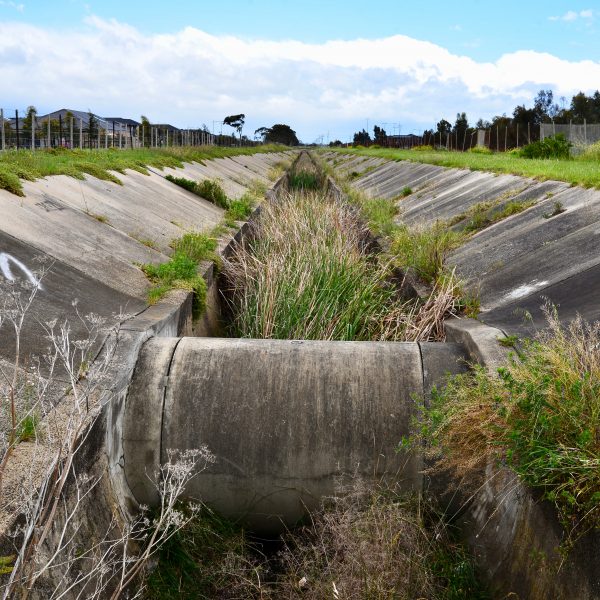
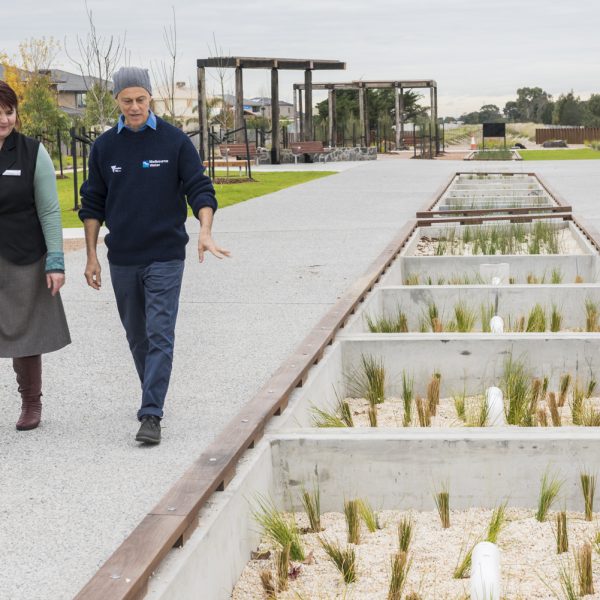
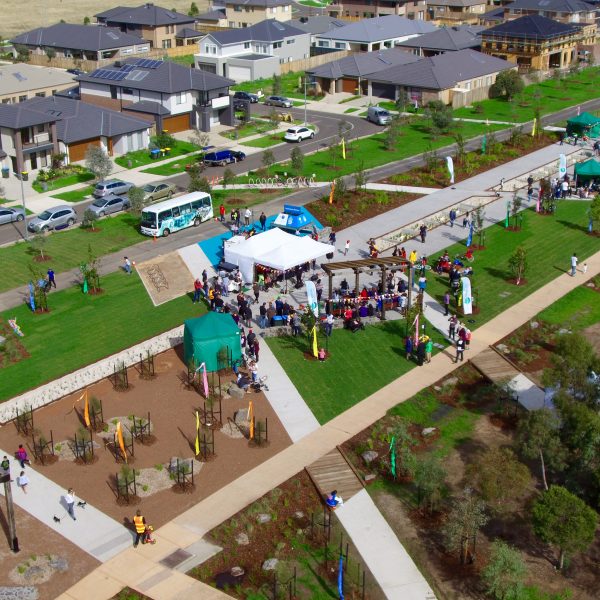
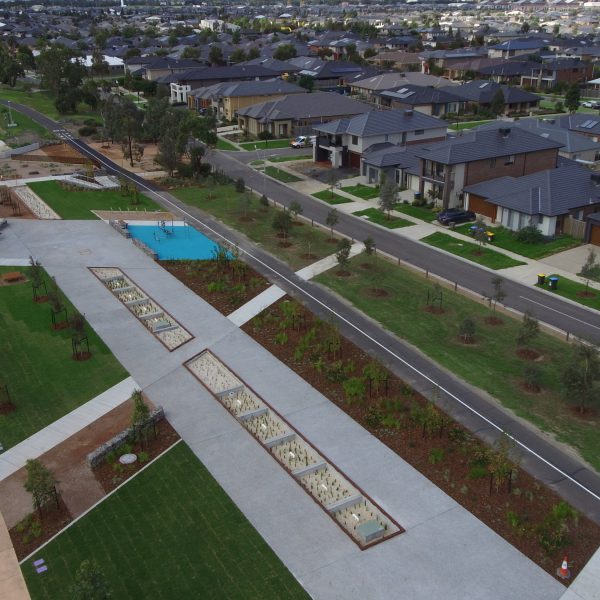
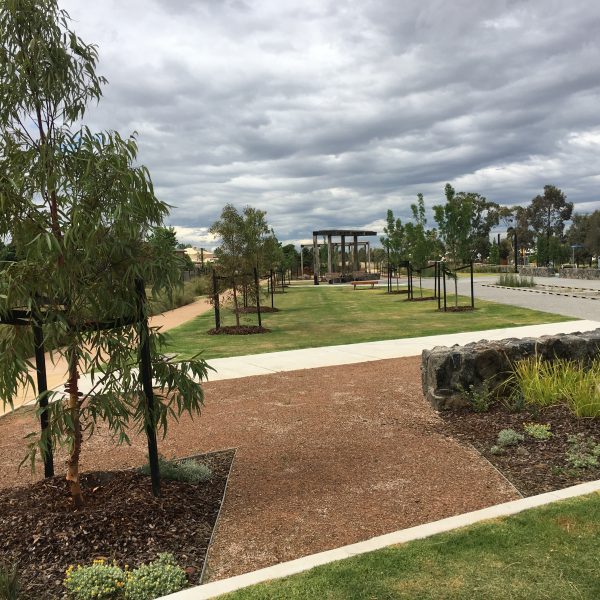
Comments